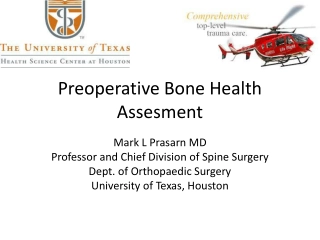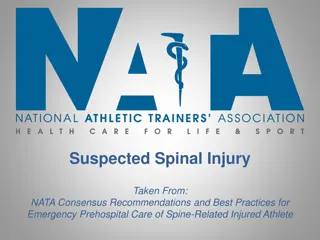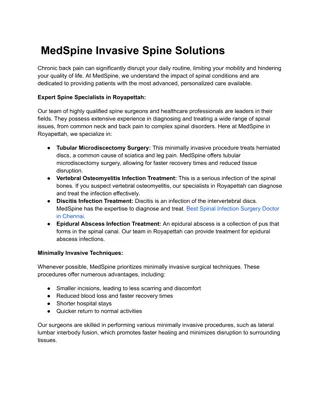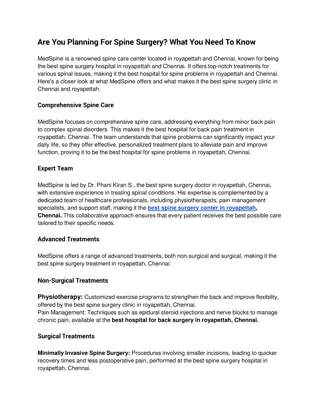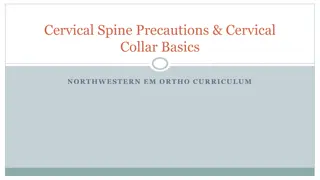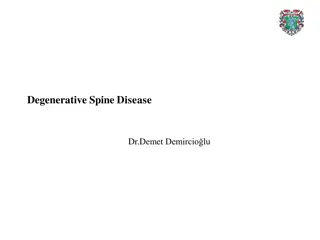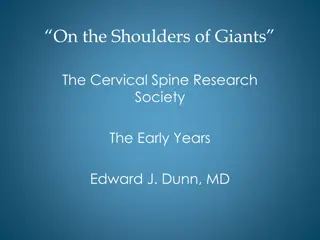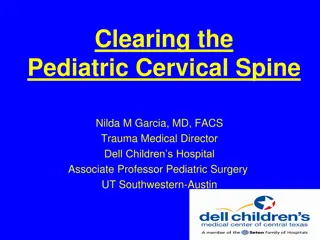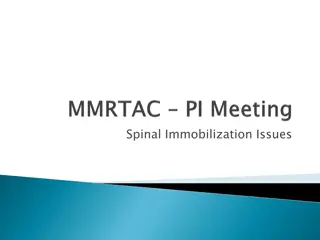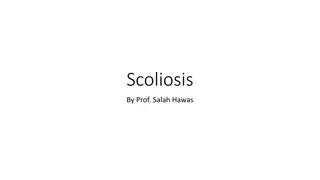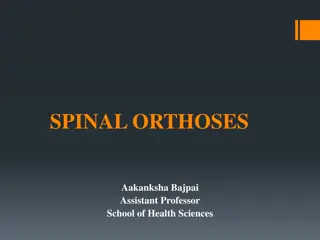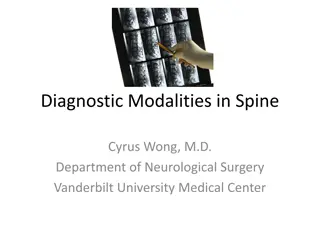Lumbarisation and Sacralisation in Human Spine
The human spine comprises the cervical, thoracic, lumbar, sacral, and coccyx vertebrae. Lumbarisation refers to the non-fusion of the uppermost sacral segment, while sacralisation involves fusion of the fifth lumbar vertebra with the sacrum. Lumbarisation can cause issues such as back pain, inflammation, and increased injury risk. On the other hand, sacralisation leads to fusion between L5 and S1, affecting spinal mobility. These conditions can result in discomfort, stiffness, and other symptoms, impacting daily activities and spinal health.
Download Presentation

Please find below an Image/Link to download the presentation.
The content on the website is provided AS IS for your information and personal use only. It may not be sold, licensed, or shared on other websites without obtaining consent from the author.If you encounter any issues during the download, it is possible that the publisher has removed the file from their server.
You are allowed to download the files provided on this website for personal or commercial use, subject to the condition that they are used lawfully. All files are the property of their respective owners.
The content on the website is provided AS IS for your information and personal use only. It may not be sold, licensed, or shared on other websites without obtaining consent from the author.
E N D
Presentation Transcript
LUMBRALISATION AND SACRALISATON
The human spine is composed of vertebra namely- Cervical spine, Thoracic, Lumbar, Sacral and the Coccyx at the lower end. There are 5 lumbar vertebrae and 5 fused sacral vertebrae, which are based in the region of middle and lower back and facilitate movements of that part.
Lumbarisation Lumbarisation is where the upper most segment of the sacrum is not fused. The first sacral segment is said to be lumbarised. Lumbarisation of S1 or lumbarisation of the first sacral vertebra is a condition in which the first sacral vertebra is not completely attached to its fused sacral components but instead this first sacral vertebra appears like the other lumbar vertebrae. It is also called as an extra vertebra, additional lumbar vertebra or transitional vertebra. It occurs due to non fusion of first and second sacral segment.
This lumbarisation S1 vertebra may also have a disc like the other lumbar segment or may have a disc space that remain undeveloped. SIGNS & SYMPTOMS- This lumbarisationS1 vertebra is not completely a fused nor does it become a normal lumbar segment. This makes it difficult to accommodate the additional vertebral joint while performing daily tasks and may makes this vertebra more vulnerable to injury and joint irritation. With advancing age and activities, the lumbarised first sacral vertebra can find it difficult
To cope and may on area that triggers pain, discomfort or may remain prone to injury. In some cases complaints like- Back pain Inflammation Swelling Stiffness of back Muscle spasms Increased risk of injury Inter-vertebral disc problems with radiculopathy.
Sacralisation Sacralisation of L5 or sacralisation of fifth lumbar vertebra is a congenital anomaly, in which the lumbar vertebra, mainly its transverse process, gets fused or semi-fused with the sacrum or the ilium or to both. This fusion can occur in one or both sides of the body. Sacralisation leads to fusion of the L5 and S1 and the intervertebral disc between them may be.
SIGNS & SYNPTOMS- Some may be a symptomatic. Patients with sacralisation are prone towards back problems than those of lumbarisation. DIAGNOSIS- Mainly X-ray CT Scan MRI
TREATMENT- Medication Surgical Rehabilitation Medication- NSAIDs Steroid injection for severe pain & discomfort Surgery- Surgical excision surgeries are opted where the symptoms are severe.
Rehabilitation- Electrical modalities Specific treatment Symptomatic treatment- Spinal traction IFT TENS Ultrasound therapy SWD LASER Spinal corset , rest
Specific treatment- Exercise regimen Muscle strengthening Muscle stretching Core strengthening exercise Manual therapy
THANK YOU THANK YOU


